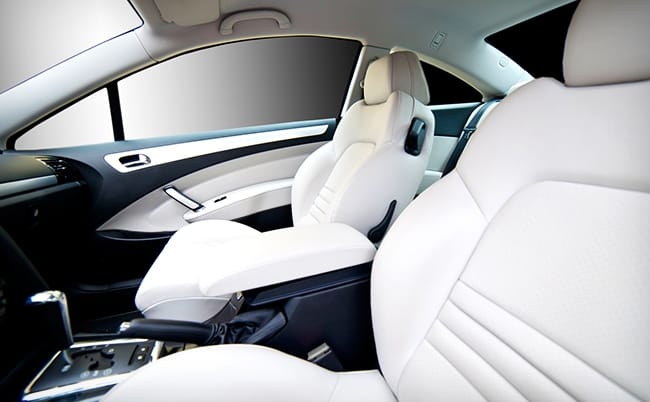If you have ever been in a vehicle with air conditioned seats, you know the amazing comfort it is able to provide you, both as a driver and as a passenger. This function helps prevent you from sticking to the seat during a hot day, it cools off hot leather so you don’t burn your skin, and it simply cools you down and helps you avoid sweating during an extended card ride. However, you might not know how air conditioned seats actually work. Understanding this form of technology should give you a better appreciation for everything that goes into the construction of the vehicle and how such a small upgrade can make your vehicle that much more comfortable.
If you look closely at the seats, you should notice small perforated holes throughout the material. This allows the air to escape from underneath and keep you cool. It is not just the material being cooled form the inside but actual air flows through the seat and out, helping to keep you cool and circulate air as well.
Inside of each seat, there is a cooling unit. When the vehicle sends a signal to the cooling unit, it starts to generate the cold temperature, which is then given off to the air around it. This air is pushed through the seat, at which point it escapes through the perforation, cooling the passenger. Different vehicles utilize a slightly different process for this, so each manufacturer is going to have a slight variation. Many vehicles actually have a separate heating and cooling unit, designed to both heat an cool the driver and passengers. Small motors inside of the seat take the cooled (or heated) air and push it through the entire seat. The motors are small enough no noise is actually heard, and with set air flow chambers installed throughout the seat, the air flow created by the motors has nowhere else to go but through the perforated areas of the seat itself.
The air itself comes from the air inside of the cabin, which is brought in through the bottom of the seat. With the vehicle bringing in air from the cabin, having a cooler temperature inside of the vehicle can play a slight impact on how quickly the cool air from the seat is able to escape the perforations, but due to the in-house cooling unit, this usually isn’t all that significant. This is also why the driver and front passenger seat have individual controllers while the rear seat (if it has the function) is just a single controller. Each seat is going to have its own individual cooling unit, allowing each passenger sitting in individual seats the ability to use the air conditioned seats.
There is a large number of different vehicle manufacturers who utilize this particular feature. While this is constantly changing, the brands that do have some sort of air conditioned seat currently installed includes Acura, Audi, BMW, Bentley, Buick, Cadillac, Chevy, Ford, GMC, Hyundai, Infiniti, Lexus, Lincoln, Maserati, Mercedes, Toyota, Volvo, VW, Nissan and Tesla (several now defunct brands, including Saab and Maybach, have this feature as well).

